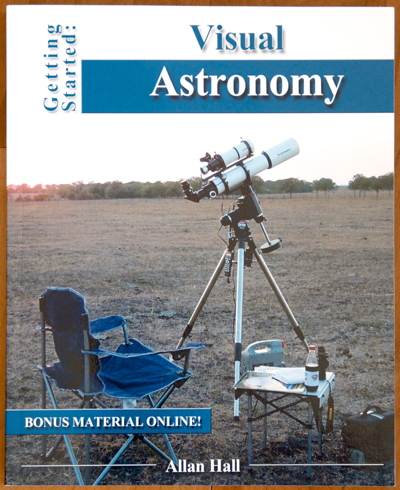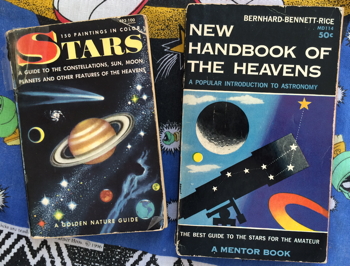
Book Review - Getting Started: Visual Astronomy
Posted: 6 August 2014
 Getting Started: Visual Astronomy
Getting Started: Visual Astronomy
by Allan Hall
$16.99
277 pages (including glossary and index)
Published July 2014
The author provided his book for this review. The author describes the purpose of his recently published book in the Introduction to "Getting Started: Visual Astronomy":
This book is aimed at the person who has the curiosity but is just starting out. You probably do not even have a telescope yet, or if you do, you just got it. You may have no idea what to look for in the sky and less idea of where to look.
I am taking a little different approach and will be covering less about what is out there, but more of what you need to know to explore on your own. There are plenty of fantastic books and software to help you find objects to observe. What I want to do is get you where you know what to do and have the right equipment to use once you know where to look for something.
To get there we will explore how things work and discuss many different types of equipment. Don’t worry, it isn’t difficult.
The Table of Contents shows the extent of the material covered:

 As I read the book I had the same excited feeling as I did when reading the books "Stars" and "New Handbook of the Heavens" as a teenager many years ago.
As I read the book I had the same excited feeling as I did when reading the books "Stars" and "New Handbook of the Heavens" as a teenager many years ago.
There are no pretty color photographs (which would have added greatly to the cost of publishing) in "Getting Started: Visual Astronomy", but you do get tons of very useful black and white (low contrast, unfortunately) photos, diagrams, and charts.
Early on in the book you get a comparison photo to set expectations for the new amateur astronomer of what can be seen through a telescope vs a photographic image:

Diagrams, like this one showing why we have meteor showers, are used frequently throughout the book to explain concepts:

A very "conversational" tone is used in the book and you feel that the author is talking directly to you. This makes the book very easy to read for the beginning astronomer, even when complex topics are being discussed.
The Equipment section is about half of the book's contents and provides an excellent overview of what is available and the pros & cons of various options. The advice in the book is right-on for the beginner.
The Observing section begins with a nice historical background and then moves into discussing how to observe. Information on many astronomical objects is included along with charts and example "observing forms". The author has provided high resolution star charts (and more) from the book online at the book's web page.
Summary
Overall this is an excellent book for the person who is interested in learning more about the night sky. The photos, diagrams, and charts will start the new observer on the right path regardless of what equipment is used. The only downside to the book is the low contrast printing used for the photographs, sometimes making it difficult to determine what is being shown. But as I mentioned earlier, higher quality printing would have added to the cost of the book. At $16.99 (USD), this book is a bargain and I can highly recommend it.
Comments are welcome using Email. If you are on Twitter you can use the button below to tweet this report to your followers. Thanks.
Cassiopeia Observatory Home Page